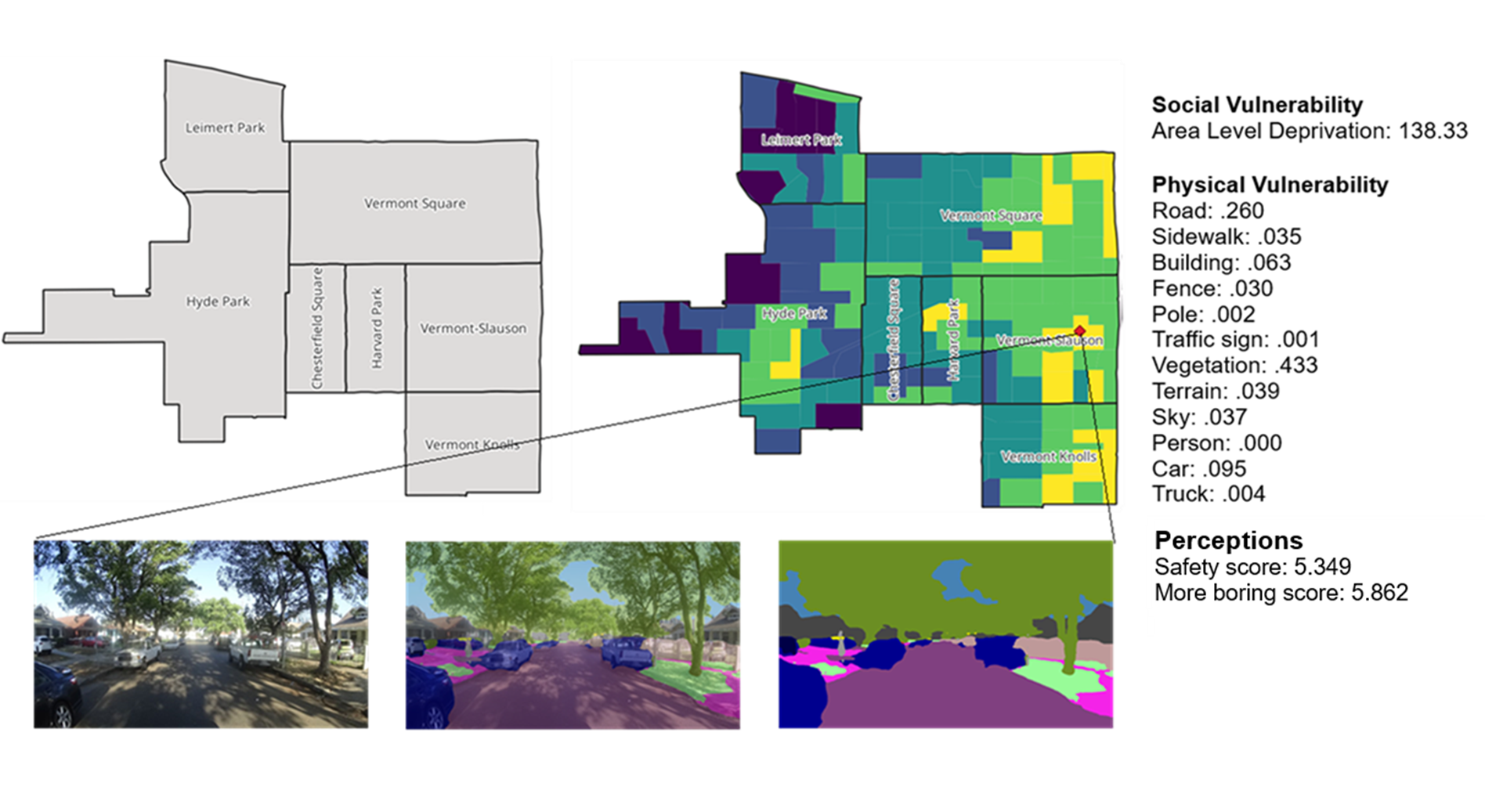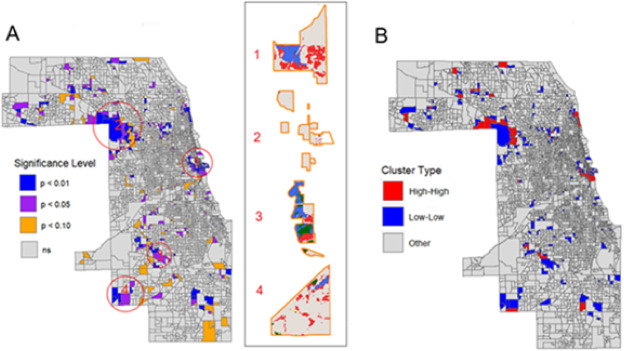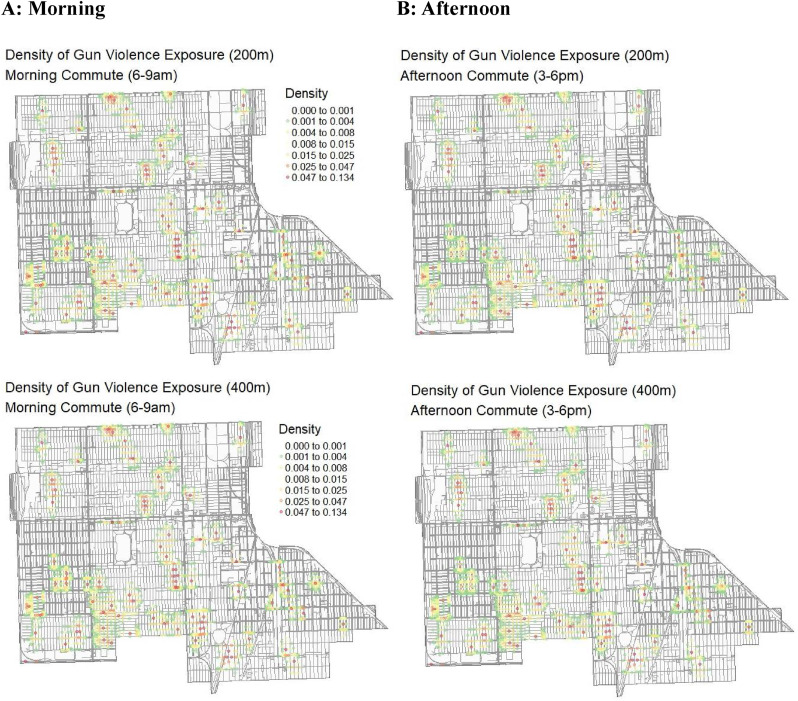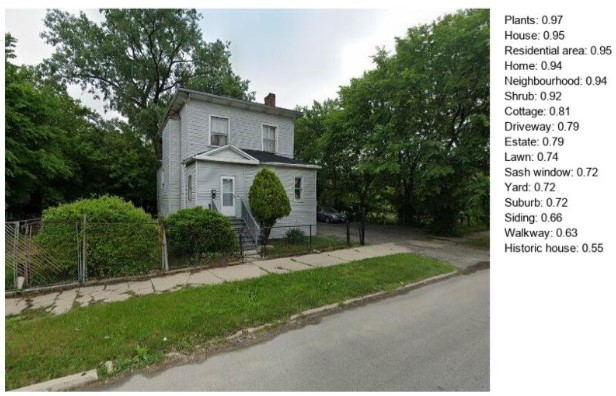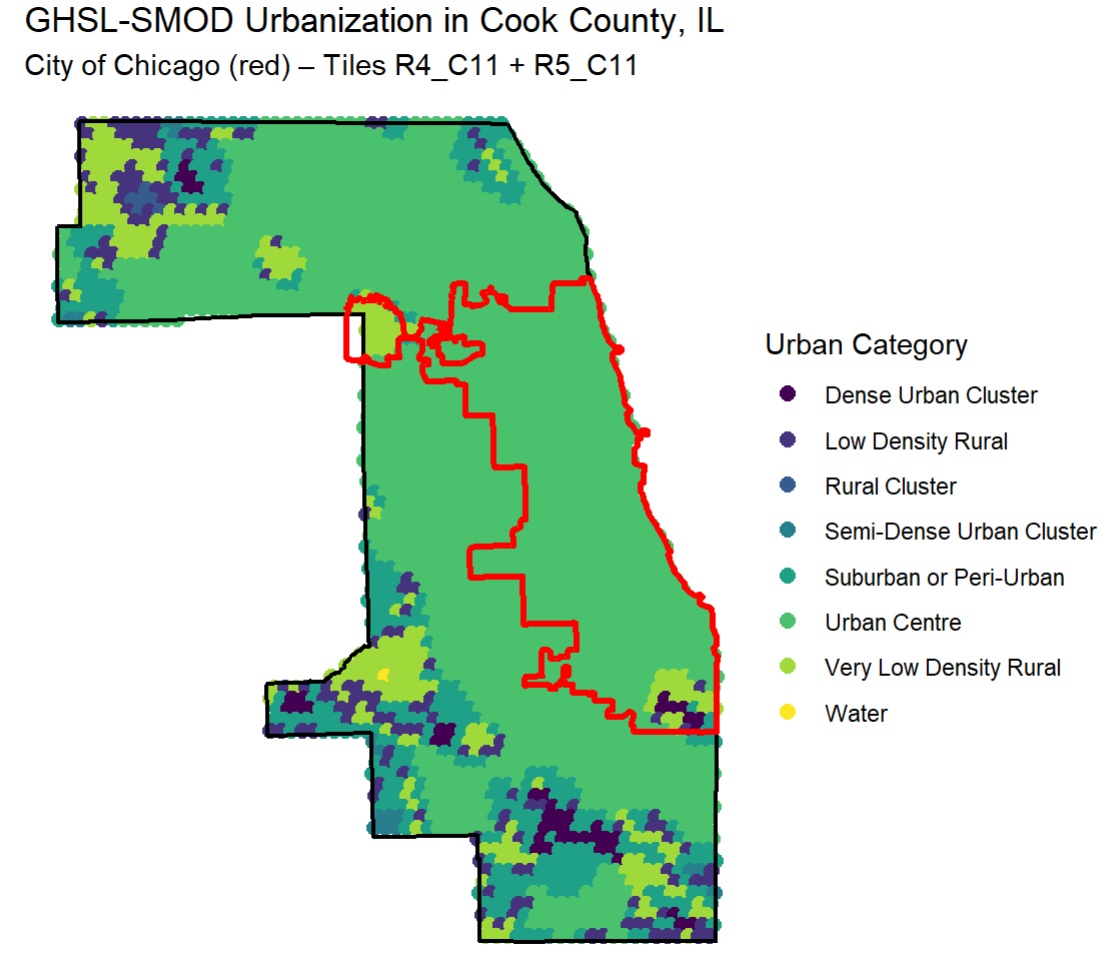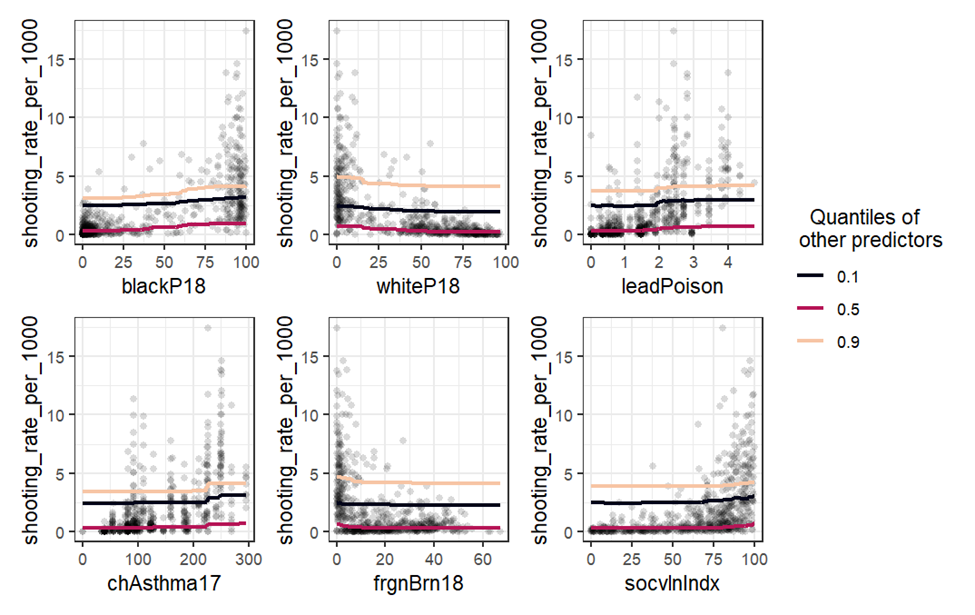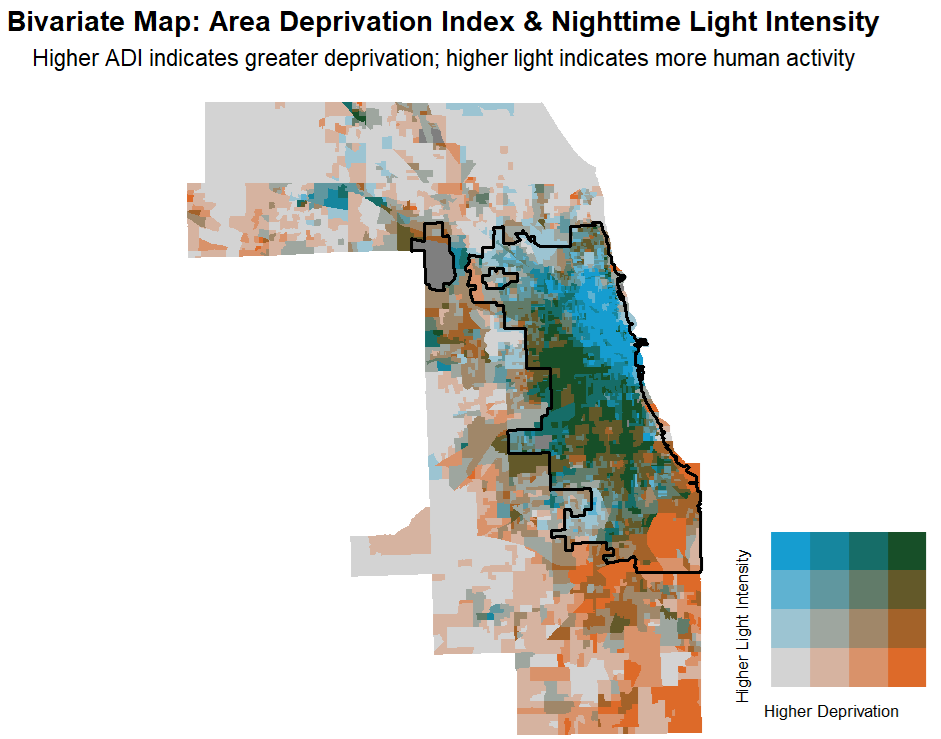
Association between Opioid-Related Injury and Built-Form Indexes Derived from Remote Sensing Data
This project examines how built environment characteristics and neighborhood disadvantage interact to shape fatal opioid overdose risk in Cook County, Illinois. Using satellite-derived indicators—including urban development intensity, nighttime light emissions, and vegetative greenness—alongside spatial Bayesian models, we identify geographic clusters of elevated overdose mortality and assess environmental and structural risk factors at fine spatial scales.

